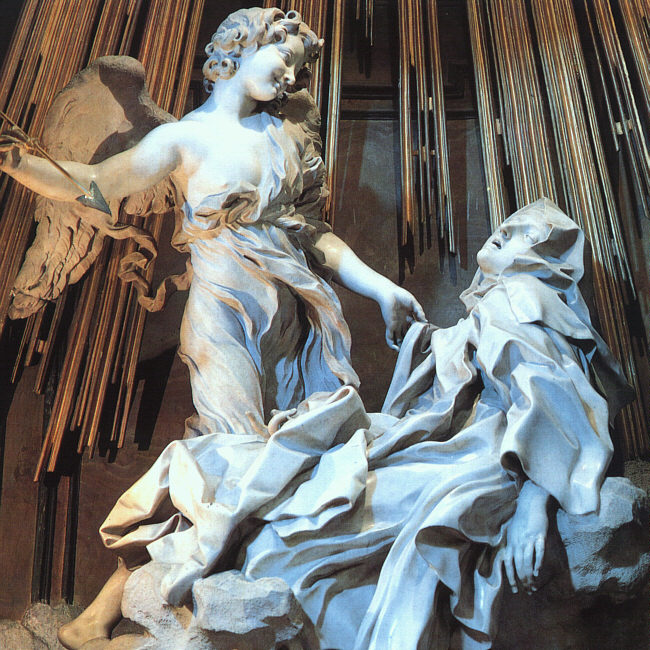
Written by Michael Morris
Saint Teresa of Avila, Doctor of the Church, Carmelite reformer, and one of the most celebrated mystics of all time, was, by her own admission, a practical and forthright person. When asked by her confessors to write her life story detailing her prayer life and the special favors granted to her by God, she did as she was commanded but protested that she would have preferred to spend the time spinning or doing household work to benefit her poor convent. What she produced in her autobiography is a remarkable account of a woman’s entry into religious life, of the constant battle between sin and grace, and the progress of the soul towards mystical union with God. Her language, simple and unforced. Flows freely like that of a born conversationalist. It is no wonder, therefore, that it became a literary masterpiece, and one of the most widely read prose classics of Spain. While Teresa would not be labeled an intellectual, her writings are filled with a sublime wisdom that attracted, among others, the Jewish philosopher Edith Stein, leading to her conversion and entry into Carmel. This sculptural creation by Bernini is an artistic interpretation of a passage found in chapter 29 of Teresa’s autobiography. Around the year 1560 when Teresa was in her late forties, she experienced one of her most intense ecstasies. It was brought on by the visit of an angel. In her own words, she said “the angel was not large but small; he was very beautiful, and his face was so aflame that he seemed to be one of those very sublime angels that appear to be cherubim, for they didn’t tell me their names. But ference between some angels and others and between these latter and still others that I wouldn’t know how to explain it.” Students of angelology will notice that Teresa made a mistake in identifying her angelic visitor. Of the nine choirs of angels, the angels of fire and love are called seraphim, not cherubim, and they stand closest to the throne of God. Furthermore, what this angel did do to Teresa was to fill her with God’s love, a love that was so incredibly intense that it was at the same time both sweet and painful: “I saw in his hands, a large golden arrow and at the end of the iron tip there appeared to be a little fire. It seemed to me this angel plunged the arrow several times into my heart and that it reached deep within me. When he drew it out, I thought he was carrying off with him the deepest part of me; and he left me all on fire with the great love of God. The pain was so great that it made me moan, and the sweetness this greatest pain caused me was so superabundant that there is no desire capable of taking it away.” Bernini’s angel holds the golden arrow in his hand, ready to plunge it again into Teresa’s heart. With a serene smile, he looks down upon the barefoot Carmelite nun as her mouth slackens, her body goes limp, her eyelids drop, and her head is thrown back in ecstasy. Critics were quick to remark how indelicately sensual this religious composition appeared. And yet, Teresa, in her own words, relates how closely the body trails the soul enraptured by God: “The pain is not bodily but spiritual, although the body doesn’t fail to share in some of it, and even a great deal. The loving exchange that takes place between the soul and God is so sweet that I beg him in his goodness to give a taste of this love to anyone who thinks I am lying.” Thus, the body of the saint is Bernini’s sculpture is levitating, lifted as it were by that same irresistible love that captivates her soul. According to Carmelite tradition, this mystical event occurred again in the life of Saint Teresa ten years later when she was prioress of the Incarnation convent in Avila. Known as the “Transverberation,” the occurrence was commemorated as a feast of the saint by the eighteenth century. As a sculptural composition, Bernini’s depiction of the Transverberation is a triumph of baroque ingenuity. Natural light is funneled from a concealed window above, shimmering against the golden rays and bathing the white marble figures with an ethereal glow. The golden arrow that plunged itself into Teresa’s heart reflects that light with the glow of fire. All these elements bring to the sensible observer a material approximation of the wonder and awe found in the invisible world of the spirit, a spirit relishing the embrace of divine, ineffable love. (Magnificat October 2001, Vol. 3, No. 8)




No comments:
Post a Comment